16th April 2020 Current Affairs in English

16th April 2020 Current Affairs in English – Today Current affairs PDF link available below.
Dear Aspirants, we (Vetripadi.com team) have come with Daily Current affairs analysis. It is prepared to crack the various competitive exams. We are here to make sure your preparation easy. We will update the current affairs every day. It will help for both preliminary and mains (facts oriented with background information) for your preparation. We need you support.
VETRIPADI Daily Newsletter
வெற்றிப்படி.காம் | வெற்றிக்கு நீ படி!!!
Daily Current affairs for Competitive
Exams ( UPSC, TNPSC, SSC)
16th APRIL 2020
TABLE OF CONTENTS
- Industries operating in rural areas to reopen on April 20
- 170 districts identified as hotspots: Health Ministry
- Protect rights of vulnerable
- 85% of Delhi NCR saw incomes fall: survey
- India to receive normal monsoon, forecasts IMD
- partners with app for free medical consultation
- Disinfectant tunnels can cause harm
- Outdated census data keep 10 cr. out of PDS: economists
- Russian firm to donate $2 mn to PM CARES
- WPI inflation cools to 4month low
- Extra Informations
1. Industries operating in rural areas to reopen on April 20
Information in News

- Wearing masks in public places is compulsory and spitting is an offence, says Union Home Ministry
- Selling liquor, gutka and tobacco is strictly prohibited.
- All industries operating in rural areas and the government’s flagship rural jobs scheme will also be allowed to reopen from April 20 if they follow social distancing norms and other safeguards against the COVID-19 infection.
- People violating quarantine will be punished under Section 188 of the Indian Penal Code, which prescribes six months imprisonment, if convicted.
- Construction of renewable energy projects will be allowed.
- In urban areas, only in situ construction projects will be allowed if workers are available on site. Brick kilns in rural areas can resume work.
- The States will decide the additional public activities to be allowed from April 20.
- The relaxations will be implemented at the discretion of the State and district authorities in areas that have not been identified as infection hotspots or containment zones.
- The standard operating procedure (SOP) for factories and office establishments from April 20 onwards says medical insurance is mandatory for workers.
- Executive magistrates in each district will be designated as ‘Incident Commanders’ to monitor compliance and to issue passes for enabling essential movements allowed under the revised guidelines.
- IT and IT enabled services will be allowed to operate at 50% strength, while IT hardware manufacturing has been added to the list of exemptions.
Reference
2. 170 districts identified as hotspots: Health Ministry
Information in News
- Nearly one in five districts in India is a hotspot
- The government said it had classified every district into a hotspot, potential hotspot or a green zone.
- Of India’s 736 districts, 170 were ‘hotspots’, defined as places with at least 15 confirmed infections or where there was an exponential rise in cases. There were 207 ‘potential hotspots.
- Testing would be ramped up to include checking even those who displayed ‘influenza-like illnesses’ and breathlessness.
- District Magistrates had the authority to declare regions as hotspots, and a protocol would be in place to check how a district was performing in containing the spread of the virus.

Reference
3. Protect rights of vulnerable
Information in News
- The National Human Rights Commission has asked the Centre to issue an advisory to all States and Union Territories to implement the lock down without violating rights.
- It urged the Centre to ensure that public officials “behave in a sensible manner with the people, particularly those belonging to vulnerable sections, respecting human rights relating to their life, liberty and dignity”.
National Human Rights Commission
- NHRC of India is an independent statutory body established on 12 October, 1993 as per provisions of Protection of Human Rights Act, 1993, later amended in 2006.
- Its headquarter is located in New Delhi.
- It is the watchdog of human rights in the country, i.e. the rights related to life, liberty, equality and dignity of the individual guaranteed by Indian Constitution or embodied in the international covenants and enforceable by courts in India.
- It was established in conformity with the Paris Principles, adopted for the promotion and protection of human rights in Paris (October, 1991) and endorsed by the General Assembly of the United Nations on 20 December, 1993.
- Universal Declaration of Human Rights (UDHR) was adopted by the United Nations General Assembly in Paris on 10 December 1948.
- It is a milestone declaration in the history of human rights which sets out, for the first time, fundamental human rights to be universally protected.
- In due time the growing importance of strengthening national human rights institutions has been recognized and in 1991, a UN meeting in Paris has developed a detailed set of principles i.e. Paris Principles. These principles became the foundation for the establishment and operation of national human rights institutions.
- In pursuant to these principles, India has enacted the Protection of Human Rights Act, 1993, with a view to bring about greater accountability and strengthening of the human rights in the country.
- This act also authorized State Governments to establish State Human Right Commission.
The Human Rights Council
- The Human Rights Council is an inter-governmental body created by the United Nations General Assembly resolution on 15 March 2006.
- It has replaced the former United Nations Commission on Human Rights.
- It is responsible for strengthening the promotion and protection of human rights around the globe and for addressing situations of human rights violations and make recommendations on them.
- It has the ability to discuss all thematic human rights issues and situations that require its attention throughout the year. It meets at the UN Office at Geneva.
- The Council is made up of 47 United Nations Member States which are elected by the UN General Assembly.
Structure of NHRC
- NHRC comprises of a chairman and four members plus the three ex-officio member. The chairman should be a retired chief justice of India. The other members should be
- One Member who is, or has been, a Judge of the Supreme Court of India
- One Member who is, or has been, the Chief Justice of a High Court
- two Members to be appointed from among persons having knowledge of, or practical experience in, matters related to human rights.
- President appoints the Chairman and members of NHRC on recommendation of high-powered committee headed by Prime Minister, The Home Minister, The Speaker of the Lok Sabha, The Leader of the Opposition in the Lok Sabha, The Deputy Chairman of the Rajya Sabha, The Leader of the Opposition in the Rajya Sabha
- The Chairperson and the members of the NHRC are appointed for 5 years or till the age of 70 years, whichever is earlier.
- They can be removed only on the charges of proved misbehavior or incapacity, if proved by an inquiry conducted by a Supreme Court Judge.
- The chairman and the members of State Commission are appointed by the Governor in consultation with the Chief Minister, Home Minister, Speaker of Legislative Assembly and Leader of the Opposition in the State Legislative Assembly.
Functions and Powers of NHRC
- NHRC investigates grievances regarding the violation of human rights either suo moto or after receiving a petition.
- It has the power to interfere in any judicial proceedings involving any allegation of violation of human rights.
- It can visit any jail or any other institution under the control of the State Government to see the living conditions of the inmates and to make recommendations thereon.
- It can review the safeguards provided under the constitution or any law for the protection of the human rights and can recommend appropriate remedial measures.
NHRC undertakes and promotes research in the field of human rights.
- NHRC works to spread human rights literacy among various sections of society and promotes awareness of the safeguards available for the protection of these rights through publications, media, seminars and other means.
- The Commission takes an independent stand while providing opinions for the protection of human rights within the parlance of the Constitution or in law for the time being enforced.
- It has the powers of a civil court and can grant interim relief.
- It also has the authority to recommend payment of compensation or damages.
- NHRC credibility is duly reflected in large number of complaints received every year and the trust reposed in it by the citizens.
- It can recommend to both the central and state governments to take suitable steps to prevent the violation of Human Rights. It submits its annual report to the President of India who causes it to be laid before each House of Parliament.
Limitations of NHRC
- NHRC does not have any mechanism of investigation. In majority cases, it asks the concerned Central and State.
- Governments to investigate the cases of the violation of Human Rights,
- It has been termed as ‘India’s teasing illusion’ by Soli Sorabjee (former Attorney-General of India) due to its incapacity to render any practical relief to the aggrieved party.
- NHRC can only make recommendations, without the power to enforce decisions.
- Many times NHRC is viewed as post-retirement destinations for judges and bureaucrats with political affiliation moreover, inadequacy of funds also hamper its working.
- A large number of grievances go unaddressed because NHRC cannot investigate the complaint registered after one year of incident.
Reference
https://www.thehindu.com/todays-paper/protect-rights-of-vulnerable/article31351585.ece
4. 85% of Delhi NCR saw incomes fall: survey
Information in News
- 30% faced shortages of food, fuel and medicines in the first few weeks of lockdown.
- Almost 85% of the Capital’s residents saw their incomes decline in the first few weeks of the COVID-19 lockdown, with casual workers being the worst affected, according to a survey carried out by the National Council of Applied Economic Research (NCAER).

National Council of Applied Economic Research
- Established in 1956, NCAER is India’s oldest and largest independent, non-profit, economic policy research institute.
- The promise of NCAER to ask the right questions, gather good evidence, analyse it well, and share the results widely has endured. India has achieved much, and much remains undone.
- As the economy has changed, so too has NCAER, to continue to help understand India’s rapid economic and social transformation.
- As newer and more complex economic challenges emerge, NCAER will have to do more to keep its promise. To do this well, that is NCAER’s promise renewed.
NCAER’s work falls into four thematic areas:
- Growth, Macro, Trade, and Economic Policy
- Investment Climate, Industry, Infrastructure, Labour, and Urban
- Agriculture and Rural Development, Natural Resources, and Environment
- Poverty, Equity, Human Development, and Consumers
The focus of NCAER’s work in these areas is on generating and analysing empirical evidence to support and inform policy choices. It is also one of a handful of think tanks globally that combine rigorous analysis and policy outreach with deep data collection capabilities, especially for household surveys.
Reference
http://www.ncaer.org/about.php?pageID=mission_and_vision
5. India to receive normal monsoon, forecasts IMD
Information in News
- India will likely have a normal monsoon, with a chance of ‘above normal’ rain in August and September, the India Meteorological Department (IMD).
- The IMD’s confidence stems largely from global weather models pointing to negligible chances of El Nino, a warming of the central equatorial Pacific that’s associated with the drying up of monsoon rain.
- It has also officially redefined the definition of what constitutes ‘normal’ rainfall and reduced it by 1 cm to 88 cm.
- The monsoon seasonal rainfall is likely to be 100% of the Long Period Average (LPA) with a model error of ± 5%. The LPA of the season rainfall over the country as a whole for the period 1961-2010 is 88 cm.
- The dynamical model, while better at forecasting the state of the weather a week or two in advance, isn’t yet considered reliable by meteorologists in forecasting the monsoon.
- The statistical models, which the IMD relied on to make its forecasts, had a 41% forecast probability of normal monsoon.
- The Indian Ocean Dipole, a temperature anomaly in the ocean that can increase monsoon rain, was also expected to be in a “neutral” state during the monsoon.
Indian Meteorological Department (IMD)
- It is national meteorological service of the country and chief government agency dealing in everything related to meteorology, seismology and associated subjects.
- It was formed in 1875 and Headquarter at
- It functions under Ministry of Earth Sciences.
- It is headquartered at present in New Delhi.
- Currently, the Director General of Meteorology (DGM) of the IMD is Mrutyunjay Mohapatra
- The current minister in charge is Dr. Harsh Vardhan, who is the Union Minister for the Earth Sciences Ministry and the Science and Technology Ministry.
Mandate
- Undertake meteorological observations and provide current information and forecasting information for most favorable operation of weather-dependent activities such as irrigation, agriculture, aviation, shipping etc.
- Offer warning against severe weather phenomenon such as tropical cyclones, norwesters, dust storms, heat waves, cold waves, heavy rains, heavy snow, etc.
- Provide met-related statistics needed for agriculture, industries, water resources management, oil exploration, and any other strategically important activities for the country.
- Engage in research in meteorology and allied subjects.
- Detect and locate earthquakes and evaluate of seismicity in various parts of the country for developmental projects.
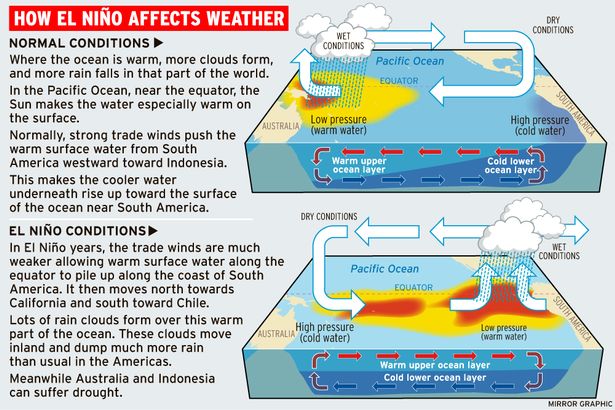
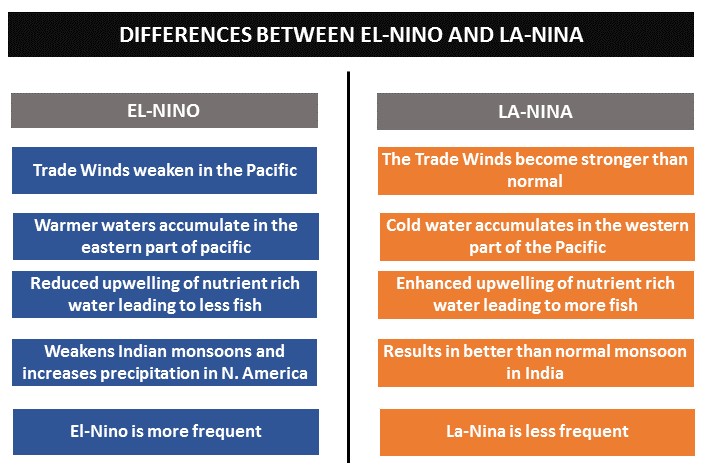
Long Period Average (LPA)
- Long Period Average (LPA) is the averages of rainfall received over a 50-year period between 1951 and 2001. This average comes to 89 cm of rainfall.
- This is the average rainfall recorded during the months from June to September, calculated during the 50-year period, and is kept as a benchmark while forecasting the quantitative rainfall for the monsoon season every year.
- IMD maintains five rainfall distribution categories on an all-India scale which are
-
- Normal or Near Normal: When per cent departure of actual rainfall is +/-10% of LPA, that is, between 96-104% of LPA
- Below normal: When departure of actual rainfall is less than 10% of LPA, that is 90-96% of LPA
- Above normal: When actual rainfall is 104-110% of LPA
- Deficient: When departure of actual rainfall is less than 90% of LPA
- Excess: When departure of actual rainfall is more than 110% of LPA
Reference
6. Govt. partners with app for free medical consultation
Information in News
- The Delhi government has partnered with CallDoc app to launch 24×7 free online medical consultation services in Delhi to help patients connect with doctors remotely via mobile app for their non-emergency medical needs.
- This will save the trouble of physical travel for regular OPD visits, especially to senior citizens.
- CallDoc is a cloud-based platform created by Oncall Medicare Pvt. Ltd.
- Users will be able to connect to doctors via video, audio, or chat.
- Earlier, it was a paid service but we have made it free for the public now.
Reference
7. Disinfectant tunnels can cause harm

- Exposure to stronger concentration of hypochlorite can cause serious damage to multiple organs, says head of COVID-19 committee at PGIMER, Chandigarh
- The use of a “disinfectant tunnel”, in which sodium hypochlorite is sprayed to prevent the spread of coronavirus (COVID-19), may give a false sense of security and cause harmful side effects.
- Although a 0.5% solution of hypochlorite, which is known as ‘Dakin solution’, is used for disinfecting areas contaminated with bodily fluids, including large blood spills.
- However, higher concentrations of sodium hypochlorite (5%) exposure may cause nasal and ocular irritation, sore throat and coughing.
- Exposure to stronger concentration (10-15%) of hypochlorite can cause serious damage to multiple organs, including burning pain, redness, swelling and blisters, damage to the respiratory tract as well as the oesophagus, serious eye damage, stomach ache, a burning sensation, diarrhoea and vomiting.
- According to World Health Organisation (WHO), too, disinfectants will work on surfaces, but not on the human body, and can also harm people.
Uses of Sodium hypochlorite:
- Sodium hypochlorite is a chemical compound with the formula NaOCl or NaClO and is industrially synthesized by the Hooker process.
- It is most often encountered as a pale greenish-yellow dilute solution commonly known as liquid bleach or simply bleach, a household chemical widely used (since the 18th century) as a disinfectant or a bleaching agent.
- Its corrosive properties, common availability, and reaction products make it a significant safety risk.
- Sodium Hypochloriteis the main ingredient in laundry bleach. It is used extensively as a bleaching agent in the textile, detergents, and paper and pulp industries. It is also used as an oxidizing agent for organic products. In the petrochemical industry, sodium hypochlorite is used in petroleum products refining.
Reference
8. Outdated census data keep 10 cr. out of PDS: economists
Information in News

- Over 10 crore people have been excluded from the Public Distribution System because outdated 2011 census data is being used to calculate State-wise National Food Security Act coverage, according to economists Jean Dreze and Reetika Khera.
- Under the NFSA, the PDS is supposed to cover 75% of the population in rural areas and 50% of the population in urban areas, which works out to 67% of the total population, using the rural-urban population ratio in 2011.
- India’s population was about 121 crore in 2011 and so PDS covered approximately 80 crore people. However, applying the 67% ratio to a projected population of 137 crore for 2020, PDS coverage today should be around 92 crore.
- Even taking into account growing urbanisation, the shortfall would be around 10 crore people who have slipped through the cracks.
- State-specific birth and death rates from 2016 were used to calculate the population growth rate and projected population estimates, said the statement.
- When the NFSA came into effect in 2013, State-wise ratios were worked out for rural and urban areas, using National Sample Survey data, in such a manner that everyone below a given national “per-capita expenditure benchmark” is covered, meaning that PDS coverage should be higher in poorer States.
- While the population data from the 2011 census was used to translate these ratios into absolute numbers, Right to Food activists have long argued that the numbers should have been updated using projected population figures.
- Allowing State governments to issue new ration cards over time. Instead, the Centre’s calculation of the actual number of people to be covered in each State has remained “frozen.
- Many State governments are reluctant to issue new ration cards beyond the numbers that will be provided for by the Central quota, making it difficult to reduce exclusion errors in the PDS.
NATIONAL FOOD SECURITY ACT-2013
In Constitution
The fundamental right to life enshrined in Article 21 of the Constitution may be interpreted to include right to live with human dignity, which may include the right to food and other basic necessities.
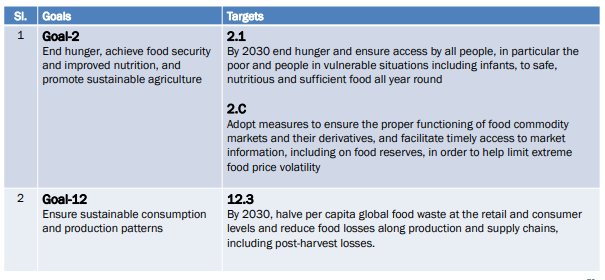
Entitlements under NFSA
- Highly subsidized food grains under PDS
- Nutritious meal, free of charge to pregnant women & lactating mothers and children up to 6 years of age under ICDS.
- Nutritious meal, free of charge to children in the 6-14 years of age group under MDM.
- Maternity benefits of Rs. 6000 to Pregnant Women & Lactating Mothers
PDS now governed by provisions of NFSA
- Coverage under PDS: 75% Rural and 50% Urban population; State-wise coverage determined by the Planning Commission (now NITI Ayog) on the basis of 2011-12 Household Consumption Expenditure survey of NSSO.
- Coverage of two-thirds of the total population at the all India level, under two categories of beneficiaries – Antodaya Anna Yojana (AAY) households and Priority Households (PHH).
- Food grains – 5 kg per person for PHH category and 35 kg per household for AAY households.
- Prices: Rs. 3/2/1 per kg for rice, wheat and coarse grain.
- No reduction in food grains allocation to any State/UT under NFSA – Tide Over allocation.
- Identification of Households to be done by States/UTs, which are required to frame their own criteria.
- Women Empowerment: Eldest woman (18 years or above) to be the head of the household for the purpose of issuing of ration cards.
- Grievance Redressal Mechanism: To be set up at the District and State levels.
- Provisions for disclosure of records relating to PDS, placing beneficiaries list in public domain.
- Assistance to States/UTs for meeting expenditure on intra-State transportation & handling of food grains and FPS Dealers’ margin.
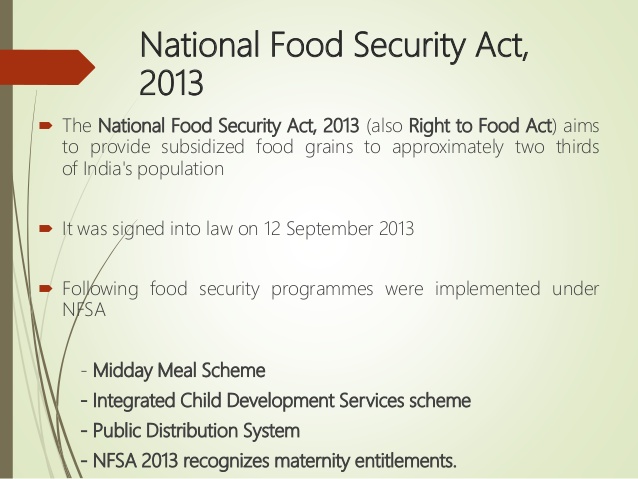
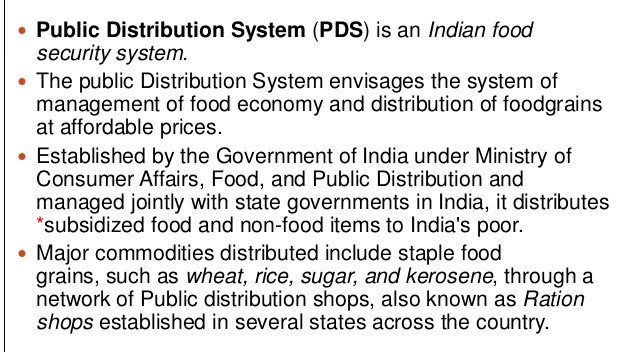
Reference
9. Russian firm to donate $2 mn to PM CARES
Information in News
- The donation would be a first as India has so far not taken funds from foreign state-run entities defence exports company Rosoboronexport has committed $2million (₹15.3 crore) to the newly set up ‘PM CARES Fund’.
- It marks a significant shift in India’s policy on accepting contributions from foreign government owned companies.
Background
- In August 2018, the Indian government had refused to accept offers of aid from several countries including the United Arab Emirates (UAE), Qatar and the Maldives during the Kerala floods. At the time, the government had said that it was committed to meeting relief and rehabilitation requirements “through domestic efforts”.
- During the 2004 Tsunami as well, PM Manmohan Singh’s government had similarly decided not to accept foreign contributions, pointing out that India had gone from being an “aid-taker to aid-giver”.
Critics
- The funds from Rosoboronexport may also come under scrutiny as the Russian company is under a series of sanctions from the United States including under its CAATSA law. India has, however, thus far refused to abide by the U.S. sanction.
COUNTERING AMERICA’S ADVERSARIES THROUGH SANCTIONS ACT 2017
- CAATSA is a United States federal law that was enacted in August 2017 with the objective of countering the aggression by Iran, Russia and North Korea through punitive measures (e.g. imposing sanctions).
- It was signed by President Trump on 02 August 2017 with an aim to counter the aggressions by Russia, Iran and North Korea.
- Section 231 of the Act empowers the US President to impose sanction on persons engaged in a “significant transaction” with Russian defence and intelligence sectors. Two of the most stringent of these sanctions are:
- suspending export licences related to munitions, dual-use and nuclear related items; and
- Ban on American investment in equity/debt of the sanctioned person.
PMCARES fund
- It will be the Public charitable trust headed by Prime Minster and Members include The Defense minister, The Home Minster and The Finance Minister.
- It accepts Micro Donations It will strengthen disaster management capacities and encourage research on protecting citizens.
- The Ministry of Corporate Affairs has clarified that contributions by companies towards the PM-CARES Fund will count towards mandatory Corporate Social responsibility.
- Under the Companies Act, 2013, companies with a minimum net worth of Rs 500 crore or turnover of Rs 1,000 crore, or net profit of Rs 5 crore are required to spend at least 2% of their average profit for the previous three years on CSR activities every year.
- The term “Corporate Social Responsibility” in general can be referred to as a corporate initiative to assess and take responsibility for the company’s effects on the environment and impact on social welfare.
Features of PM-CARES fund
- Exempted from tax under Section 80(G) of Income Tax Act.
- The Fund is held by the State Bank of India.
Reference
10. WPI inflation cools to 4month low
Information in News
- Wholesale price inflation eased to a four-month low of 1% in March on sharp fall in prices of food and fuel items as demand slowed.
- The Wholesale Price Index (WPI) based inflation was 2.26% in February and 3.10% in March 2019.
Wholesale Price Index (WPI)
- WPI is an index that measures and tracks changes in prices of goods; at the factory, mandi, and essentially at various levels in the supply chain, before they reach the end consumer (retail level).
- In India, WPI is prepared by Office of Economic Adviser, Department of Industrial Policy and Promotion, Ministry of Commerce and Industry on a weekly basis.
- The base year is 2011-12.
- The Index basket of the WPI categorises the commodities under the 3 groups namely, Primary Articles, Fuel and Power, and Manufactured Products and the present Index basket has 697 items in total which include-
- 117 items -Primary Articles,
- 16 items -Fuel and Power
- 564 items -Manufactured Products
- Limitation of the Wholesale Price Index
- WPI does not include services in its representative basket.
- In order to remove the impact of the impact of fiscal policy, indirect taxes have been left out of the WPI.
Extra Informations
1. International Energy Agency (IEA)
- Established in 1974 as per framework of the OECD.
- IEA is an autonomous intergovernmental
- To ensure reliable, affordable and clean energy for its member countries and beyond. Its mission is guided by four main areas of focus: energy security, economic development, environmental awareness and engagement worldwide
- Headquarters (Secretariat): Paris, France.
- It has 30 members at present. IEA family also includes eight association countries. A candidate country must be a member country of the OECD.
- But all OECD members are not IEA members.
- To become member a candidate country must demonstrate that it has:
- Crude oil and/or product reserves equivalent to 90 days of the previous year’s net imports, to which the government has immediate access (even if it does not own them directly) and could be used to address disruptions to global oil supply.
- A demand restraint programme to reduce national oil consumption by up to 10%.
- Legislation and organisation to operate the Co-ordinated Emergency Response Measures (CERM) on a national basis.
- Legislation and measures to ensure that all oil companies under its jurisdiction report information upon request.
- Measures in place to ensure the capability of contributing its share of an IEA collective action.
Roles and functions
- Established in the wake of the 1973-1974 oil crisis, to help its members respond to major oil supply disruptions, a role it continues to fulfil today.
- IEA’s mandate has expanded over time to include tracking and analyzing global key energy trends, promoting sound energy policy, and fostering multinational energy technology cooperation.
PDF Download Here
Tags : current affairs 2020 100, current affairs 2020 jan, current affairs 2020 pdf, current affairs 2020 quiz, current affairs 2020 hindi, current affairs 2020 india, current affairs 2020 today, current affairs 2020 nigeria, current affairs 2020 questions, current affairs 2020 in tamil, current affairs 2020 gk today, current affairs 2020 in english, current affairs 2020 gd topics, current affairs 2020 pdf download, current affairs 2020 in hindi pdf, current affairs 2020 questions and answers, current affairs 2020 january in affairs cloud,TNPSC Current Affairs 2020, current affairs in tamil, best current affairs for tnpsc exams, tnpsc group 4 current affair, tnpsc group 2 current affairs, tnpsc group 2a current affairs, tnpsc group 1 current affairs, tnpsc current affairs 2019

